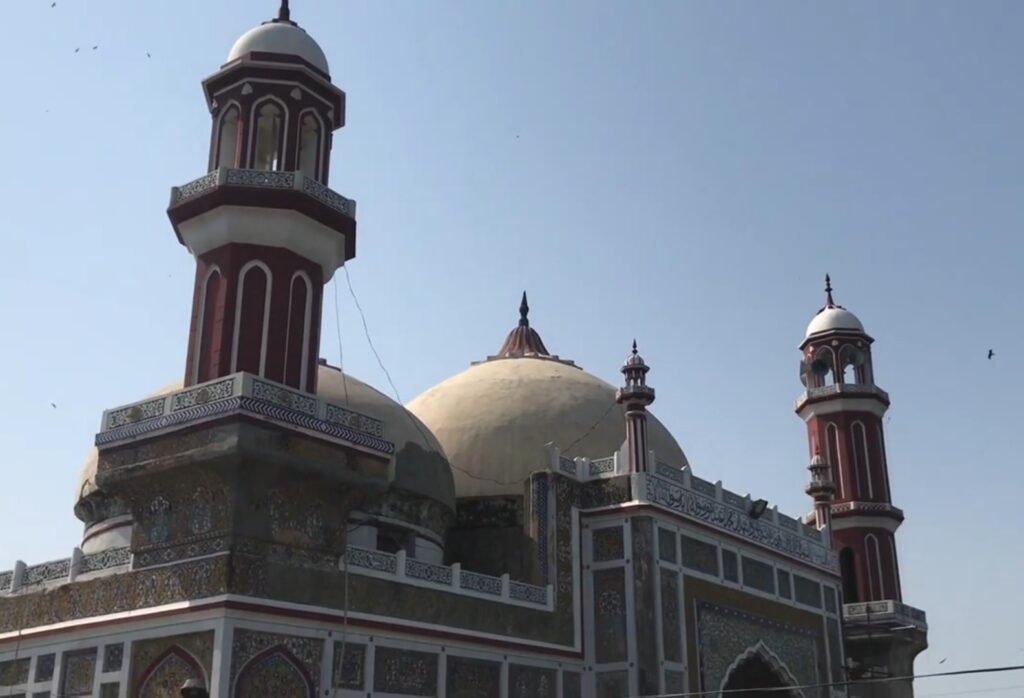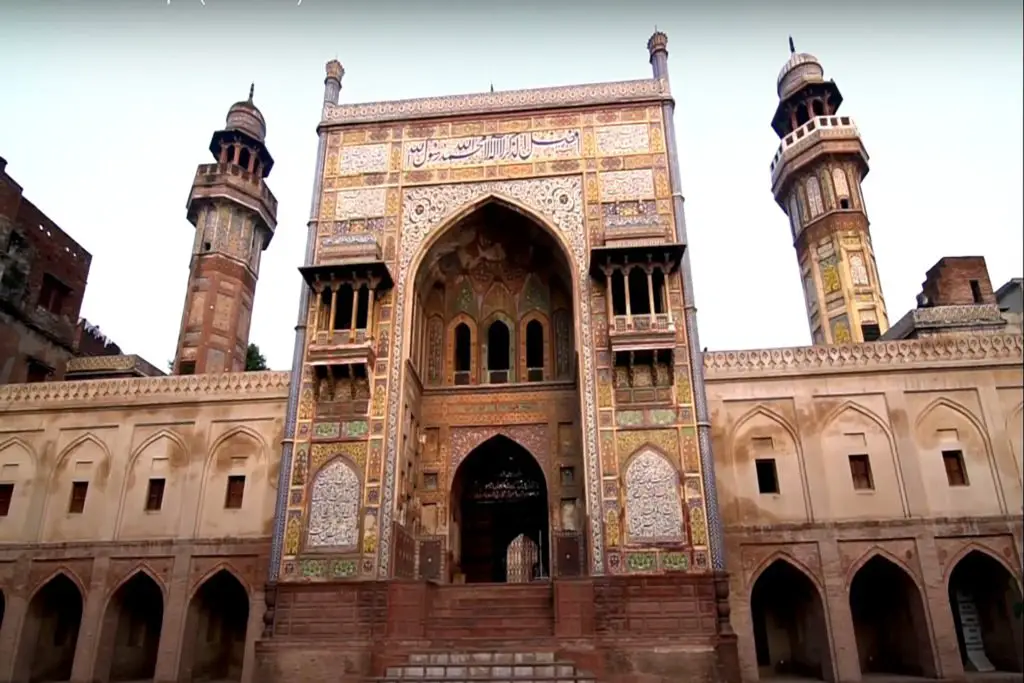Dai Anga Mosque, an architectural gem nestled in the historical city of Lahore, Pakistan, stands as a testament to the region’s rich cultural heritage. This sacred site holds great significance and showcases the intricate craftsmanship of the Mughal era. Let us delve into the fascinating history and captivating features of the Dai Anga Mosque.
Location of Dai Anga Mosque
Dai Anga’s Mosque, located in the Naulakha area southeast of the Lahore railway station is one of the city’s well-preserved historical mosques. It is situated near the Lahore Fort, making it an important historical landmark. To reach the mosque, you may have to navigate through heavy traffic, but locals can provide directions. One route to the mosque is from Nicholson Road, starting at Qila Gujjar Singh Chowk and passing the Presbyterian Church and Boharwala Chowk.
Historical Background:
Commissioned by Dai Anga, the wet nurse of Mughal Emperor Shah Jahan, the mosque was constructed in the 17th century. Dai Anga was a prominent noblewoman known for her philanthropic activities and patronage of the arts. Her devotion to the Muslim faith led her to build this magnificent mosque as a place of worship and community gathering.
Architectural Splendor:
The Dai Anga Mosque displays a remarkable blend of Mughal and Persian architectural styles, exemplifying the grandeur and elegance of that era. The structure showcases intricate ornamentation, elaborate frescoes, and delicate calligraphy, all meticulously crafted by skilled artisans. Its distinctive features include domes, minarets, and a beautiful courtyard.
Dai Anga was a respected figure in the Mughal royal family. Originally named Zeb-un-Nisa, she served as the wet nurse of the Mughal Emperor Shah Jahan. Her family had a long history of service to the Mughal Empire.
Dai Anga’s husband, Murad Khan, held the position of Magistrate of Bikaner under Emperor Jahangir, and her son, Muhammad Rashid Khan, was renowned as one of the best archers in the Mughal kingdom. Unfortunately, Dai Anga’s son met his demise while fighting in the service of Shah Jahan’s eldest son, Dara Shikoh.
During her lifetime, Dai Anga contributed to the cultural heritage of Lahore by commissioning the construction of a mosque. Later, her tomb was built in Lahore along the Grand Trunk Road, also known as Gulabi Bagh gateway. Despite her historical significance, many residents of Lahore are unaware of these places, as they are not widely promoted or recognized as tourist sites.
Today, Dai Anga’s Mosque remains a hidden gem of Mughal architecture in Lahore, often overlooked by tourists and residents alike. It holds great historical and architectural value, and it is hoped that it will receive more recognition and attention in the future.
Design and Layout:
The mosque’s layout follows the traditional Mughal architectural plan. The central courtyard is surrounded by arcades with ornate arches, providing a serene space for prayer and contemplation. The main prayer hall, adorned with intricate plasterwork and floral motifs, is a visual delight for visitors.
The mosque’s architecture is truly impressive. While some restoration work has altered its appearance over time, its grandeur remains unmistakable. The mosque features a single-aisle, three-bay design, which is considered a simplified version of the opulent mosques built during the Mughal era. The prayer chamber is particularly striking, with a central dome and double domes in the side bays, a design common in Mughal-era mosques.
The mosque’s exterior is adorned with colorful tile mosaics, with dominant colors of blue, orange, and yellow, typical of the Shah Jahan period. The facade is divided into decorative panels with intricate designs created through mosaic kashi kari.
The mosque also has tall minarets with cupolas, and its courtyard includes an ablution tank. Over the years, the mosque experienced various changes in purpose, including serving as a military depot, a residence, and an office.
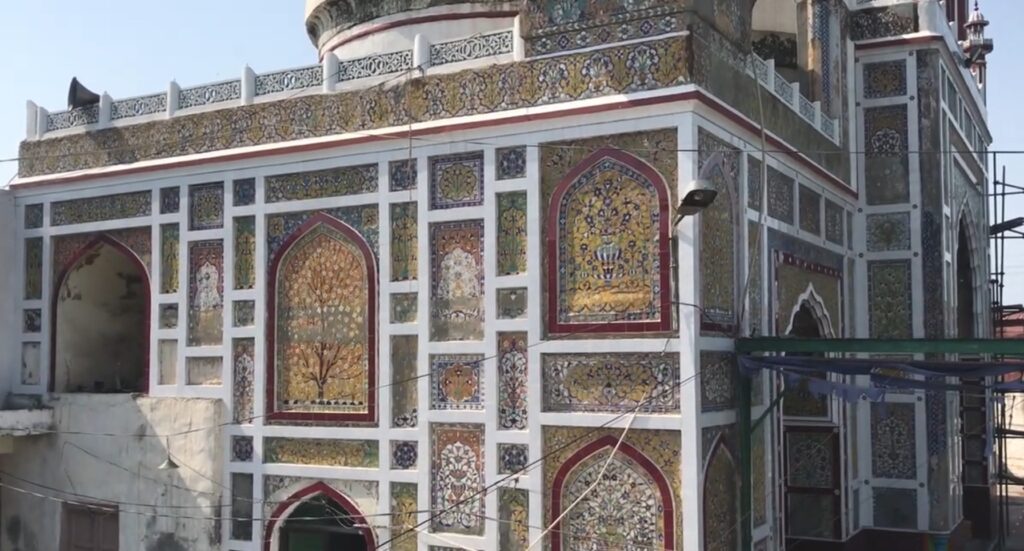
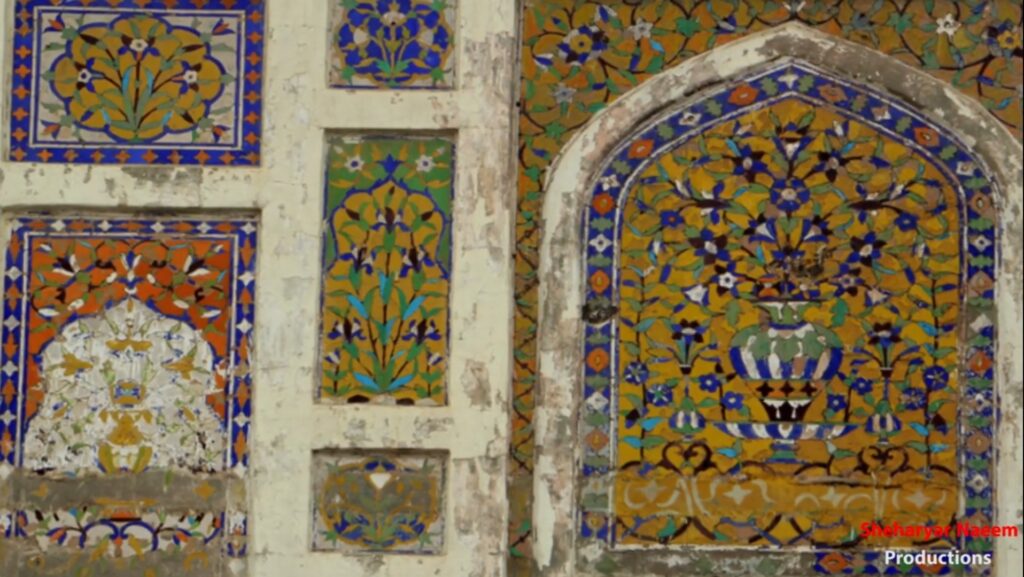
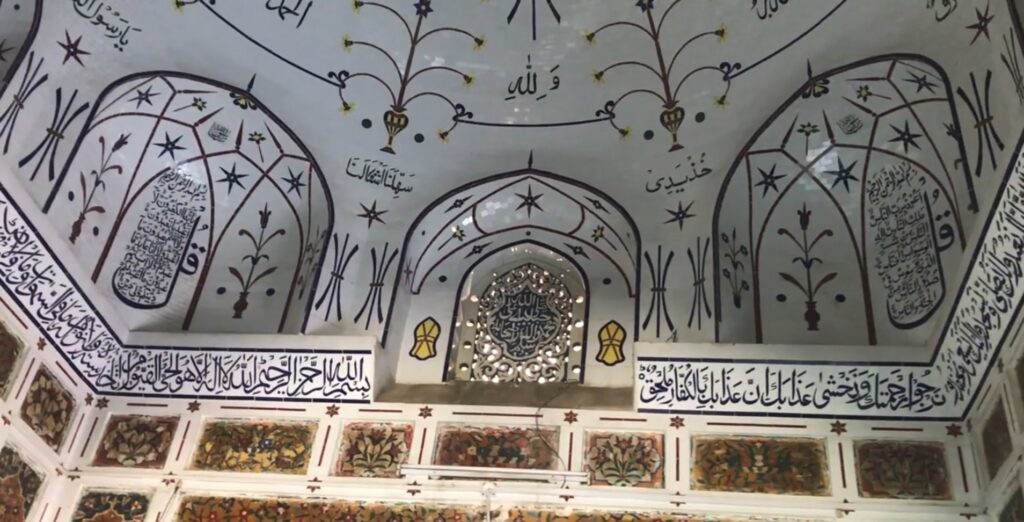
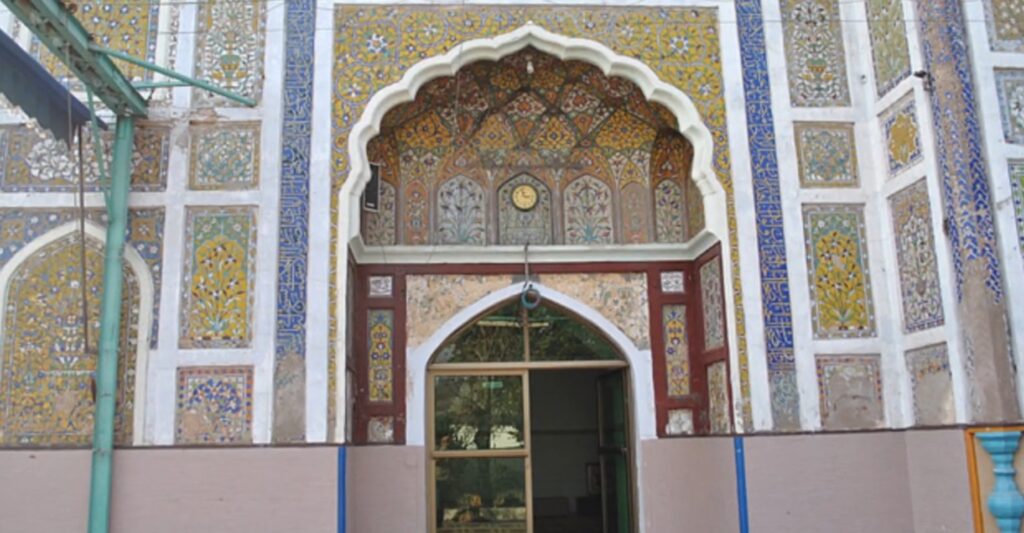
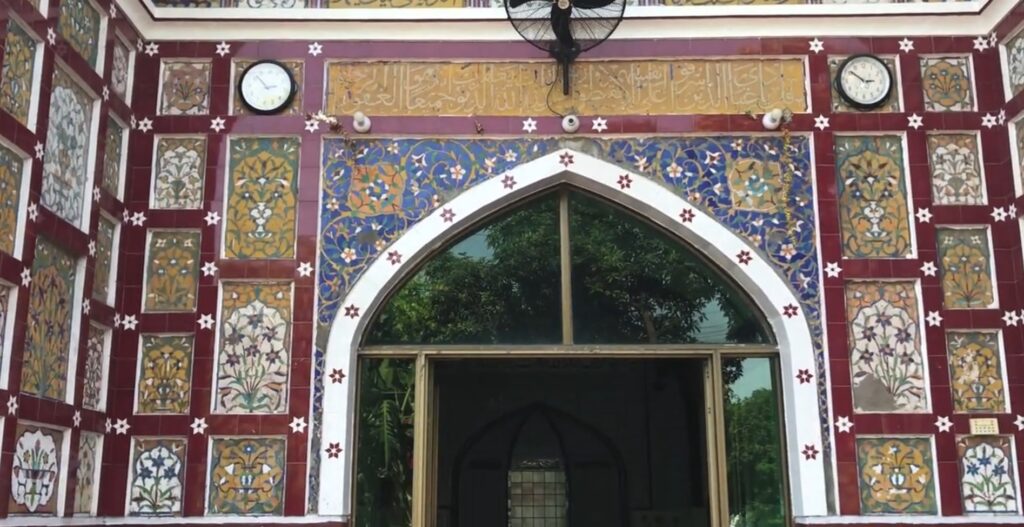
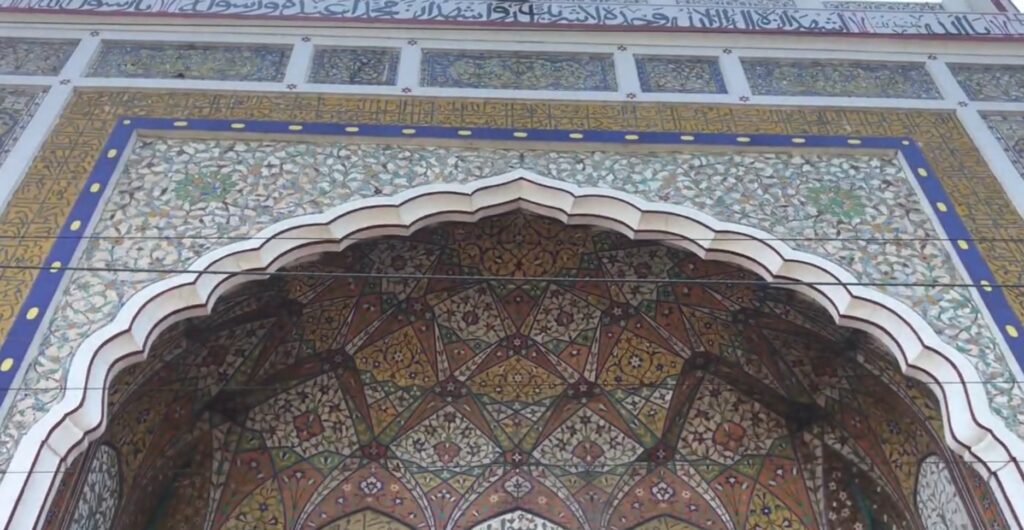
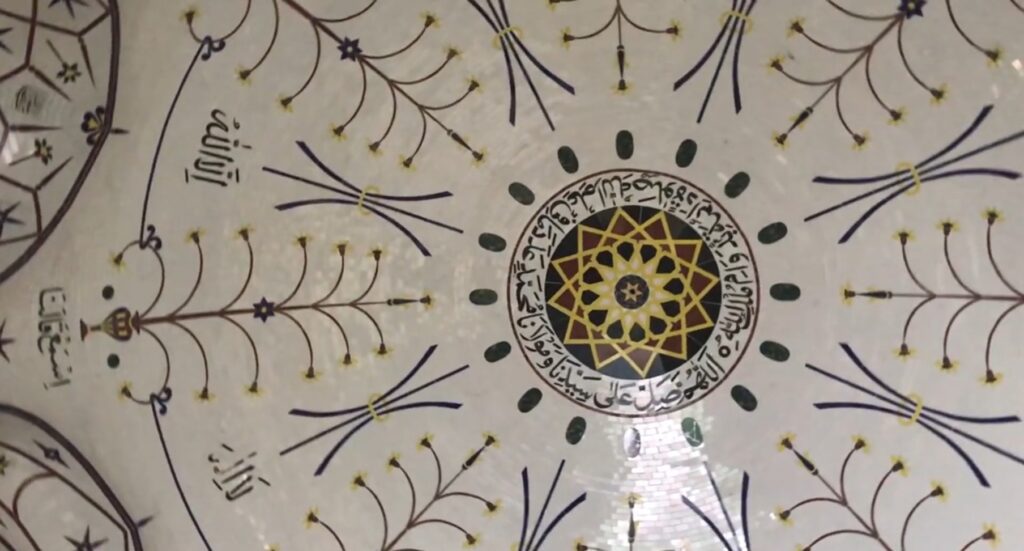
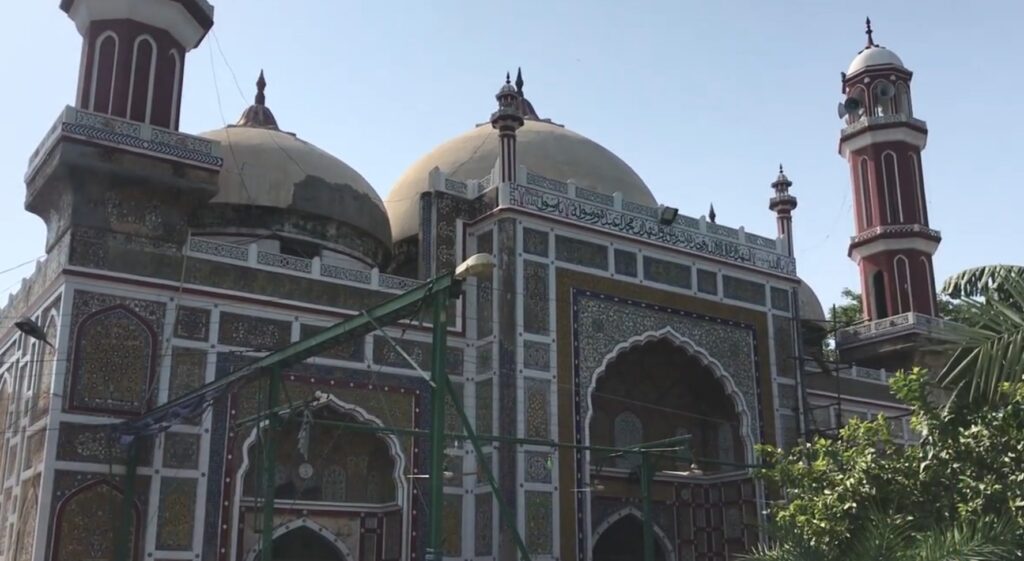
Calligraphic Masterpieces:
One of the highlights of the Dai Anga Mosque is the exquisite calligraphy that adorns its walls. Skilled calligraphers of the time have meticulously inscribed Quranic verses and religious texts, transforming the mosque into a living testament to Islamic art and culture. The intricate calligraphic designs continue to awe and inspire visitors to this day.
Restoration and Preservation:
Over the years, efforts have been made to preserve and restore the Dai Anga Mosque, ensuring its architectural integrity and cultural significance remain intact. Restoration projects have focused on maintaining the original craftsmanship, reviving faded frescoes, and repairing any damages caused by time and weather.
Community Engagement:
The Dai Anga Mosque continues to serve as a vibrant center for religious and community activities. It attracts worshippers, scholars, and tourists alike, providing a space for prayer, reflection, and cultural exchange. The mosque also hosts religious ceremonies, educational programs, and events that foster a sense of community and appreciation for the mosque’s historical legacy.
The Dai Anga Mosque stands as a testament to the rich cultural and architectural heritage of Lahore. Its intricate design, magnificent calligraphy, and historical significance make it a must-visit destination for those interested in exploring the region’s Mughal legacy. As visitors enter its tranquil spaces and witness its breathtaking beauty, they are transported back in time to an era of artistic brilliance and devotion. The preservation and celebration of the Dai Anga Mosque ensure that its cultural heritage will continue to inspire and captivate generations to come.

